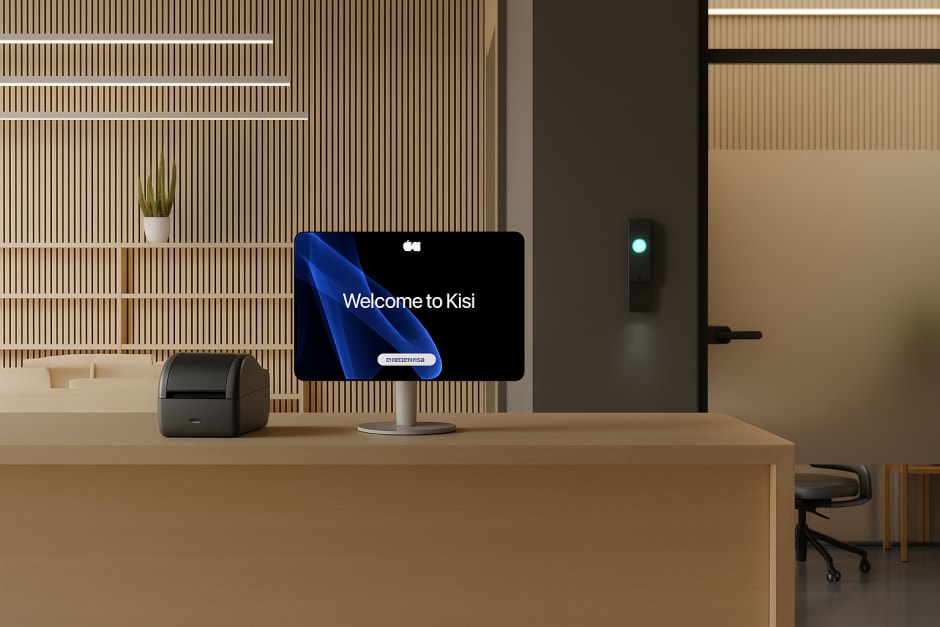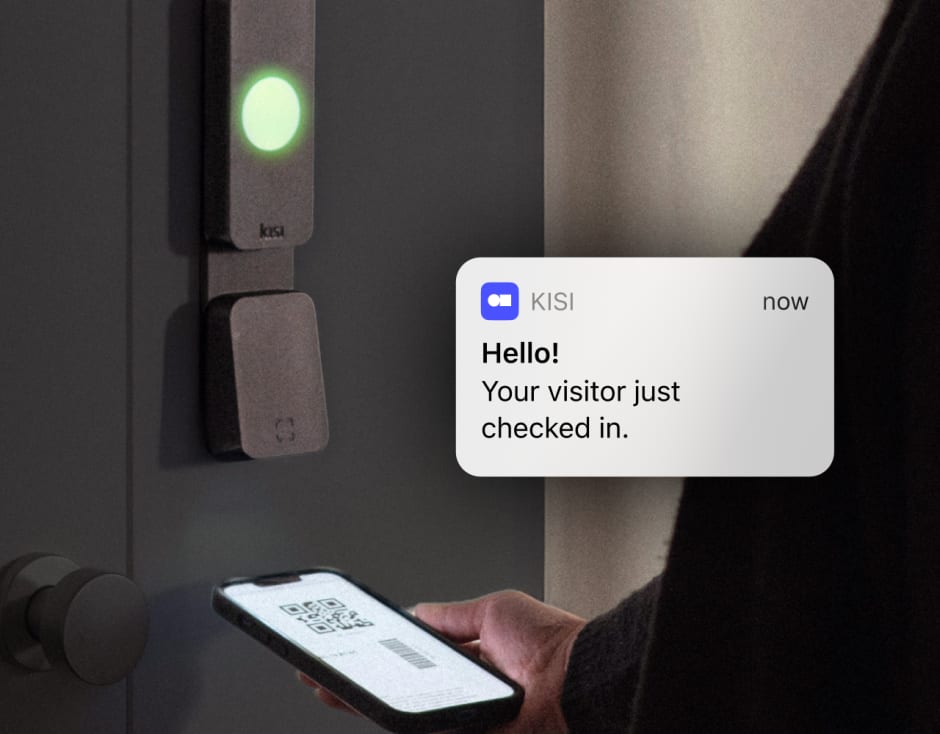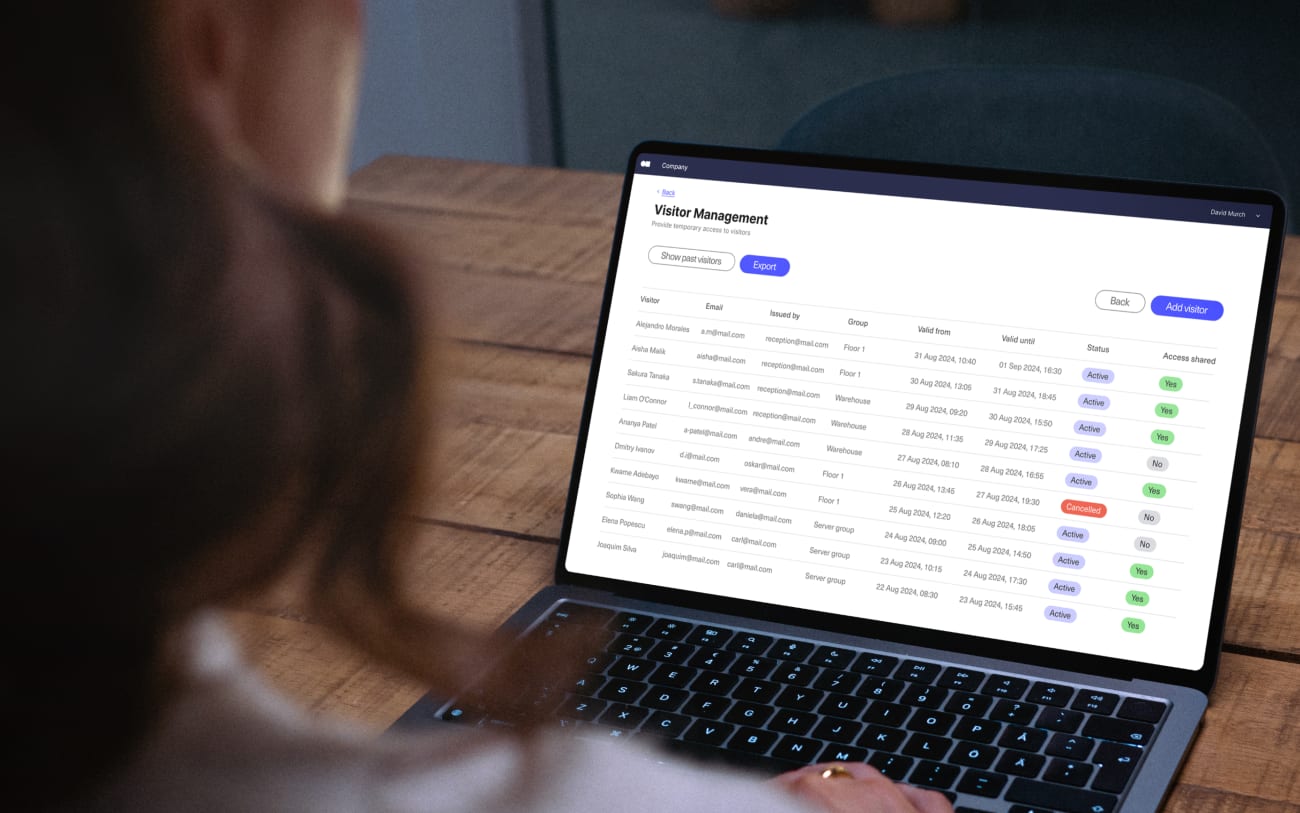Receptionists can make or break a visitor’s impression of your organization. A positive experience encourages them to come back again, while a negative encounter could be the deciding factor that pushes them to check out your competitors. To combat common problems in reception areas, including excessive wait times, unhelpful staff, and limited hours of availability, many organizations are making the switch to virtual front desk systems.
Opting to make your receptionist virtual is a big step, but it can pay off in even bigger ways. From automating tasks to keeping your front desk open at all hours, using a digital solution in place of or in addition to your traditional receptionist can create new opportunities and expand your pool of potential customers and clients.
Automated, software-based front desk solutions can also cut costs and make your front office operations more efficient without damaging the visitor experience. This article will introduce you to the concept of virtual front desks, explain different alternatives to live receptionists, and outline the steps to set up a successful system for your office.

What is a virtual receptionist or front desk? #
A virtual front desk is a self-service, software-based visitor experience powered by tablets, cloud access control, bookings, and automated workflows. Sometimes referred to as a virtual receptionist, it’s designed to simplify visitor entries while also maintaining security.
Types of virtual reception solutions #
If you’re ready to make the transition from a live receptionist to a digital solution, you can choose from several options. These are the types of virtual receptionist systems many businesses are implementing:
- Live remote receptionist services: A virtual receptionist is sometimes a remote worker who answers calls and addresses customer concerns from an off-site location. They can handle an organization’s communications needs without being present in a central office.
- AI/chat-based visitor routing: Some businesses use chatbots and other communication tools powered by artificial intelligence (AI). These systems can respond to customer inquiries, guide them to an online solution, or, if necessary, connect them with a live human representative.
- Software-based virtual front desk platforms: A virtual front desk receptionist system uses technology to manage an organization’s front office. Front desk software can automate essential tasks and limit access to the building, and managers can control it from an app or online dashboard.
Virtual receptionist software, such as Kisi, is an ideal solution because it encompasses so many aspects of the visitor experience. While remote receptionists and AI-based routing are useful, their limited functionalities mean they can’t help with on-site access control or security, both of which are essential to any office.

Key features of a modern virtual front desk #
Depending on the provider, a virtual receptionist system can do much more than just welcome visitors to the office. The best solutions offer a wide range of core features.
Visitor check-ins #
The foundation of a strong virtual front desk is its visitor management capabilities. With systems like Kisi, visitors can check in without assistance from an employee. All they have to do is sign in by scanning a QR code or using a visitor management kiosk. This contactless experience is more convenient and allows visitors to sign in at any time, whether a staff member is available or not.
Host notifications #
Traditional receptionists usually let employees know their visitors have arrived by calling them, a time-consuming process that extends the wait time for the guest. Front desk software automatically reaches out to hosts by sending a notification through a visitor management app or text message. This automated communication is faster and creates a better visitor experience.
Scheduling and reservations #
Most virtual reception software can manage scheduling and bookings. Visitors can set up appointments with employees and team members can reserve rooms and other spaces for meetings. An automated system will prevent double bookings and send reminders when appointment times are approaching.
Badge printing #
Visitor badges are another essential component of a virtual front desk. With a live receptionist, visitors typically have to wait for their badges to be generated. With software, they can automatically print their badges at check-in, or you can assign them ahead of time to streamline visitor flow. Using identification helps make it clear who is on the premises, allowing employees to recognize visitors and offer help or guidance if they need it.
Document signing #
During the visitor sign-in process, you can have guests fill out necessary documents along with their basic personal information. For example, a front desk system can require them to complete a non-disclosure agreement (NDA) or background check before gaining access to the office. Because the system stores this data in the cloud, you don’t have to worry about paperwork getting lost or misfiled.
Access control #
Along with visitor management features, a well-rounded virtual front desk should also address access control. With Kisi, you can provide visitors with time-limited access links or QR codes sent via email or text message. When they arrive at your building, they can use these temporary credentials to unlock doors without downloading an app or asking an on-site receptionist for help.
In addition, you can pre-register visitors and invite guests so they can get through the check-in process as quickly as possible when they arrive. These steps strengthen your office security and make visitor arrivals stress-free.
Why virtual reception desks are rising in popularity #
Experts expect the virtual front desk market to reach $5.21 billion by 2032, nearly double its value in 2025. You can trace this dramatic growth to the advantages these systems offer to organizations of all types and sizes, from government agencies to healthcare providers to enterprise businesses.
Lower costs #
For many organizations switching to virtual front desks, cost savings are the number one priority. A virtual reception system lowers your overhead costs by limiting or eliminating the expenses associated with a traditional setup. For example, you can reduce staffing and use a smaller office space without worrying about a crowded waiting area or long lines blocking the door.
Versatility and scalability #
Virtual front desks are also highly flexible, allowing you to meet changing circumstances throughout the year. If you have a busier season, the system can adapt to meet the needs of higher visitor traffic, typically without requiring any additional financial investment. In contrast, a company relying on live receptionists might struggle to keep up during peak season, or they might have to hire temporary staff to carry the heavier work load.
Enhanced efficiency #
A virtual receptionist for businesses automates many of the tedious tasks that bog down human employees. Instead of focusing on checking in visitors and unlocking doors, your employees can put their focus on more productive work. At the same time, the system works more quickly, minimizing wait times and offering visitors a better overall experience from the first moment they encounter your organization.
Extended availability #
Another limitation of live receptionist staffing is availability. Staffing your office around the clock gets expensive, and finding employees willing and able to work all hours can be challenging. A digital solution enables 24/7 availability, so visitors, customers, and clients can get the support they need at any time.

Common uses for virtual front desks #
A virtual front desk is an excellent tool for virtually any organization, but it can be especially advantageous for businesses with limited staffing or non-traditional schedules. These are some of the most common applications for virtual reception software:
- Unmanned offices
- Coworking spaces
- Unmanned gyms
- Hybrid teams
- Lobbies with variable staffing
In each of these scenarios, a virtual receptionist makes it easier to support visitors and customers despite potential challenges. For example, a virtual front desk in an unmanned gym means members can do their workouts after-hours when their schedules allow.

How to set up a virtual front desk #
The complexity of your virtual front desk will help shape your implementation, but every organization should follow a few basic steps:
- Choose the right solution: Start by selecting a reliable service provider, such as Kisi. If you’ve never used a virtual reception system before, ask to book a demo or sign up for a free trial so you can get a closer look at what it can do before you sign up.
- Select your hardware: Decide what types of hardware you want to include in your system, such as door readers, intercoms, badge printers, and tablet kiosks. Ask the service provider whether your virtual front desk will integrate with any of your existing systems and devices.
- Customize your system: You can tailor systems like Kisi to meet the unique needs of your office. That might mean incorporating branding into your visitor management app, setting up schedules for visitor access, or creating a customized pre-registration page.
- Train your employees: Let your team know how the virtual front desk will make their lives easier and how to best utilize its features. Walk them through the system so they can offer assistance to customers or visitors if they have questions.
- Make changes as you go: Periodically assess how well your virtual reception system is serving your employees and visitors. Take feedback and use it to make changes, such as adjusting your visitor check-in process.
Through every stage of your virtual front desk set-up, awareness is critical. Pay attention to what’s working and what’s not, be receptive to employee or visitor concerns, and look for opportunities to demonstrate how the system will benefit everyone. Employee and visitor buy-in will translate to a smoother transition to a digital solution.
Optimize your front desk with Kisi #
Whether you work in a large company with multiple locations or a small business you run primarily out of your living room, a virtual front desk can help optimize the visitor experience. While a human employee may not always be available to set up appointments or open doors, a digital receptionist is always on-duty.
Kisi’s visitor management and access control solutions can help you achieve the same welcoming environment as a live receptionist — with the added bonus of making your office more accessible, seamless, and efficient. Reach out to schedule a demo or learn more about signing up for a free trial of our visitor management software.

Vera Eftimovska
Marketing Campaign Manager at Kisi, blends her psychology background with hands-on experience in access control and workplace security. Passionate about how technology and human behavior intersect, she shares insights that help businesses build resilient, future-ready, and security-driven workplaces.



